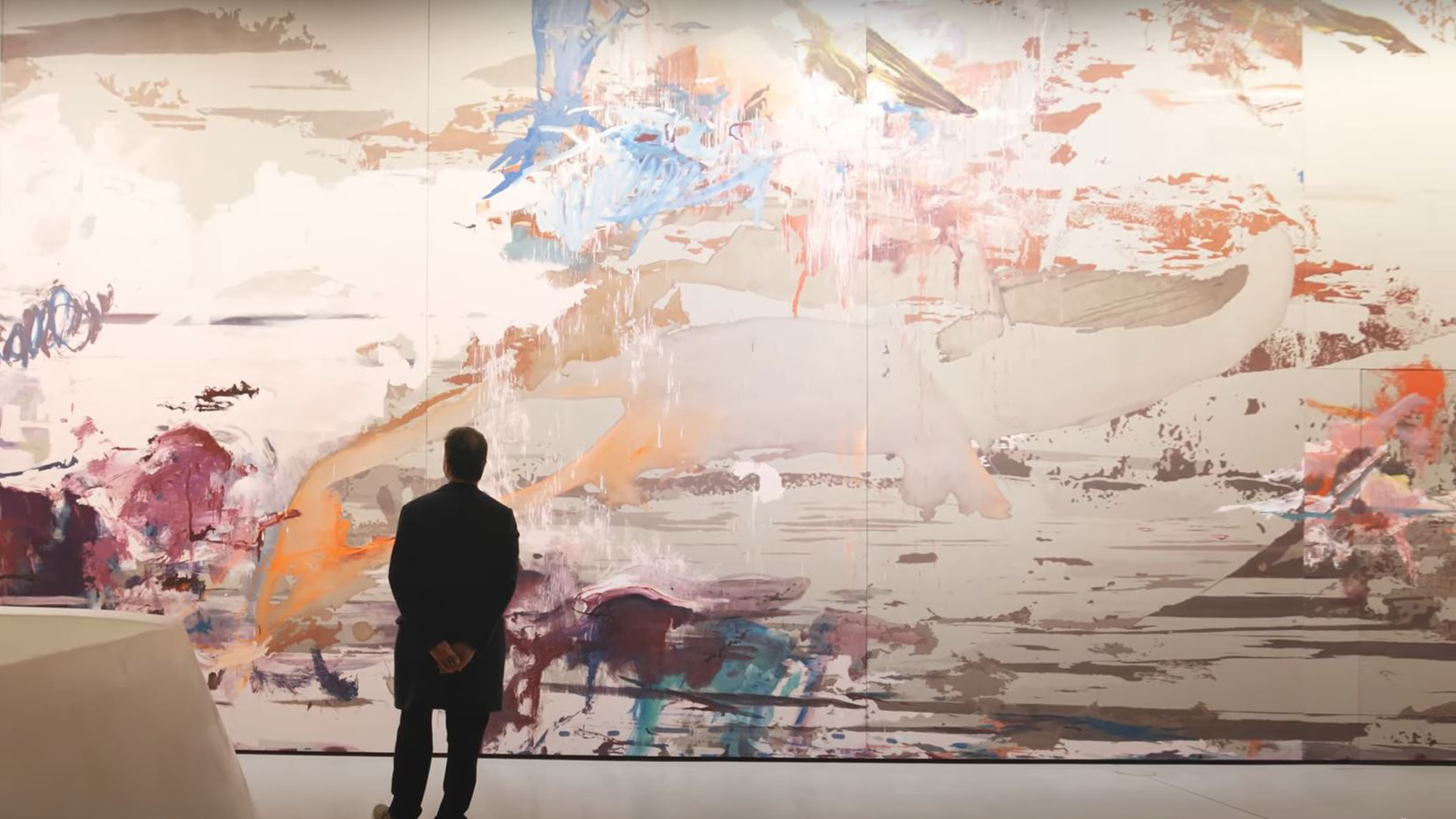About the Exhibition
The German-British artist Michael Anthony Müller (born 1970) took visitors into the mythological world of Ancient Greece with an expansive installation, drawings, paintings, and a sculpture. By means of painting, but while also going beyond its boundaries, Müller presented a multi-faceted artistic reflection on the meaning of time, mortality, and love that endures outside time. In the process, he weighed up the potential of abstraction and asked the crucial question: Can an abstract artwork tell a story?
The piece “The Given Day” (2021–2022), based on the Ancient Greek myth of the Dioscuri, the twins Castor and Polydeuces, formed the heart of the exhibition. In battle, the inseparable brothers are divided by the death of Castor, a mortal. Zeus grants the two brothers a shared life – a life between the worlds. Henceforth the brothers alternate between a day spent in Hades, the realm of the dead, and a day on Olympus amongst the gods. A prologue consisting of Müller’s drawings and a sculpture interacted with works on paper from the Städel Museum collection to familiarize visitors with the myth. With his site-specific piece “The Given Day”, Müller also had different concepts of time enter into dialogue: Firstly, there is the physical notion of time, which allowed for a subdivision of time segments into objective units; secondly, there is human-existential time, which evaded such a strict subdivision. The work measured a total of 6 × 65 metres and was made up of 24 large-format canvases. They symbolized the 24 hours of the day, and Müller painted each exclusively at the hour of the day for which the respective canvas stands. The exhibition culminated in the garden halls, where Müller presented further groups of works and quite literally accompanied the visitors into the “underworld”.
Curator: Svenja Grosser (Deputy Director, Collection of Contemporary Art, Städel Museum)
Film
